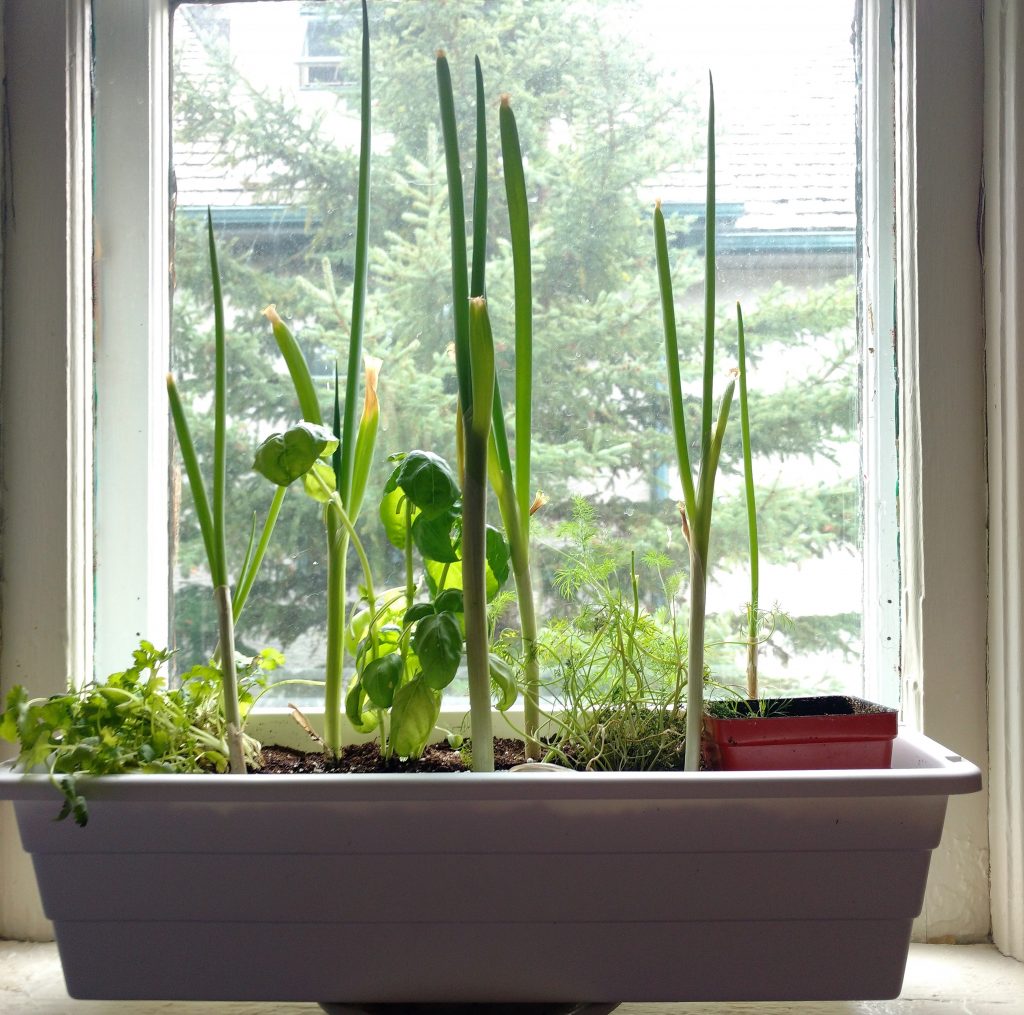It’s week thirteen of 52 Weeks for Earth, the 52-week challenge to gradually reduce your impact on the planet. In recent weeks we’ve been changing our food habits to reduce our food-related climate footprint. This week we’ll be continuing this work by considering starting to grow your own food.
Recently we’ve spoken about food mileage, and the carbon impact of transporting food around the world, highlighting the importance of eating locally and in-season. Well, what’s more local and in-season than food grown in your own backyard, or balcony, or kitchen windowsill? Growing your own food is a very rewarding practice, and it really reconnects you with the food cycle.
Starting with seeds, or even food scraps, you can grow delicious and nutritious organic food for yourself and family or friends. In upcoming weeks I’ll show you how to start your own compost, so that once grown and eaten, you’ll be able to compost any food waste. Once composted, that food becomes rich soil and fertilizer for you to grow more food with, thus completing a circular food chain.
What you choose to grow depends on where you live, what season it is, your diet, and what your goals are. There’s many resources out there on how to grow food in different climates, and environments, such as apartments and other small spaces. You can utilize what you have at hand to grow food, upcycling plastic containers, bottles or tin cans into pots keeps them out of the waste stream for longer, and quality ones might even be used over and over again.
Leafy greens might be a great place to start, as they’re easy to grow, can be harvested easily at the time of eating, and the store-bought counterpart requires high energy use for refrigerating during transportation. Similarly, growing herbs is easy, and reduces food waste as you only need to harvest what you need for each meal, unlike large bundles of fresh herb bought from the store.
START HERE: The easiest plant to grow from food scraps
One of the simplest things to keep alive and regrow from food scraps is green onions (also known as scallions or spring onions). Pick up a bunch with healthy looking roots at your grocery store, once you get it home simply pop it in a glass of water and place in a sunny window. This will actually keep the plant alive for weeks; just remember to change the water regularly. You can even cut all the green off and eat it, and it will grow back a few times. To keep it growing for longer, simply plant the roots in some soil and water regularly. And just like that you don’t have to buy green onion again!

SIMPLE: Cilantro, basil, dill and green onions growing on my windowsill last summer.
When you grow your own food, you can opt out of using pesticides, herbicides and synthetic fertilizers, saving the planet the pollution from these chemical-based substances. Most generic nitrogen fertilizers require a great deal of energy to produce and transport, and peat fertilizer is actually harvested unsustainably. Instead, you can produce your own fertilizer through composting (look forward to week 15).
Choosing not to use pesticides also helps to protect the diminishing population of bees, essential for growing at least 30% of the world’s crops. Knowing exactly what went into growing your food is a good feeling, one you rarely get from your regular grocery shop. It also saves you money! Instead of buying expensive organic produce, you’ll be growing your own from the comfort of your home. That’s the freshest tasting food you can get.
#52WeeksForEarth | Facebook: 52 Days for Earth